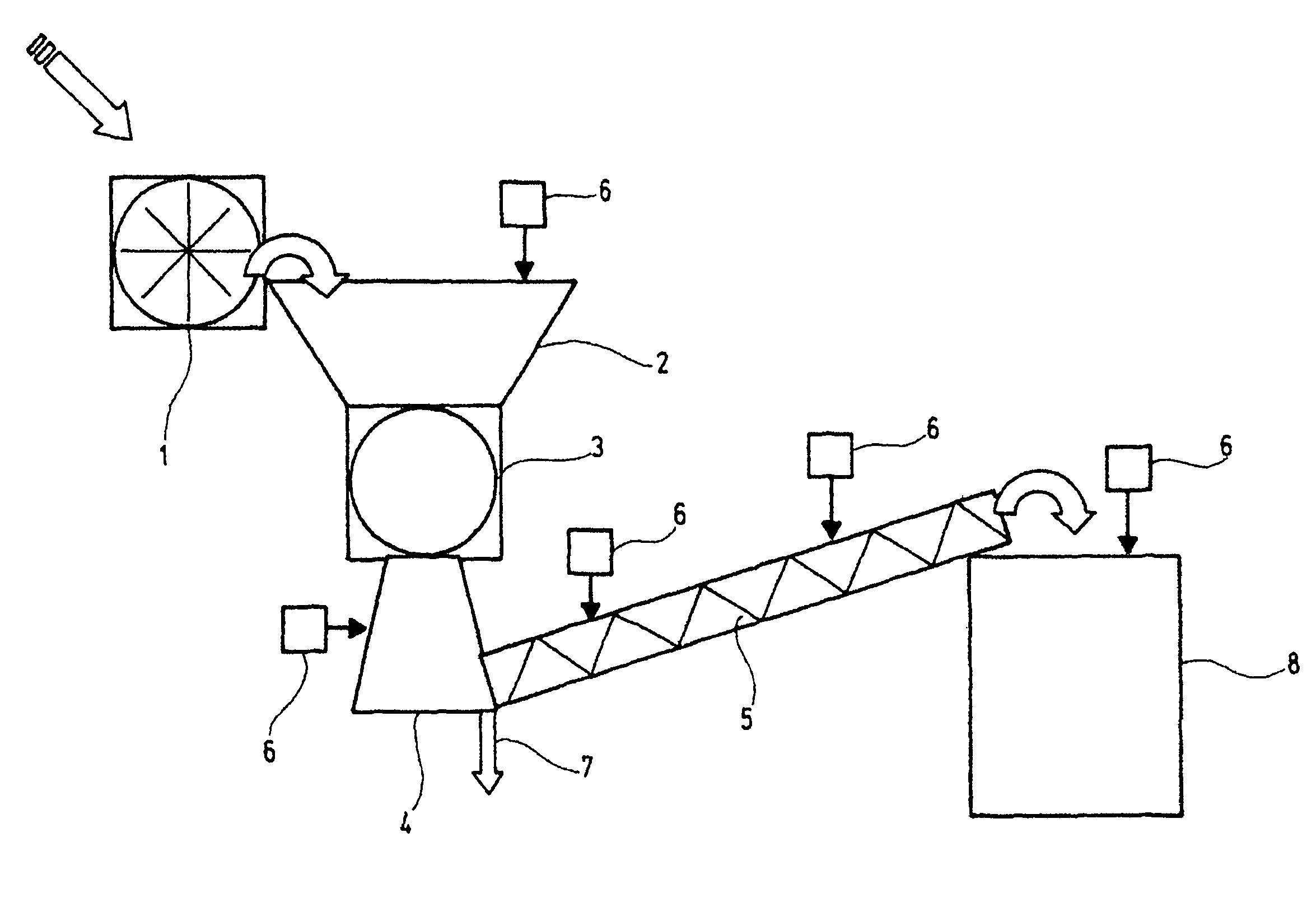Extraction of ingredients from biological material
- Summary
- Abstract
- Description
- Claims
- Application Information
AI Technical Summary
Benefits of technology
Problems solved by technology
Method used
Image
Examples
example 1
Alkaline Extraction of Electroporated Beet Material
[0053]Directly harvested or stored sugar beets are washed and then impinged, in coarsely shredded form or uncut, with high voltage pulses of from 0.7 to 1.5 kV / cm in an electroporation unit (1). During this time, the beets or beet chips are present in a conductive medium having a conductivity of from 0.4 to 2.1 mS / cm. The electroporation opens up the cell walls in a known manner.
[0054]The electroporated beets or beet chips are then conveyed into an intermediate bunker (2) directly above the cutting machine (3), passed from there into the cutter (3), are comminuted and then passed, by way of a delivery shaft (4), into a full screw (5), whose outer jacket and screw threads are perforated in order to enable the cell juice, that is the conveyor juice, which emerges from the beet chips to escape. Milk of lime is metered into the intermediate bunker for the purpose of reducing microbiological activity.
[0055]The closed full screw has the t...
example 2
[0063]Pilot plant-scale experiments (processed beets: 6 kg / h) are presented below in order to illustrate the advantageous nature of the method.
Procedural Step of Cutting and Alkalinizing the Beet
[0064]Beets were electroporated in an electroporation apparatus at a field strength of from 0.7 to 1.5 kV / cm and then shredded in a pilot-plant slicer / shredder (Alexander-werk). The chips were then transferred to a mixer and treated with milk of lime (slaked lime solution). In this connection, care was taken to ensure that the chip temperature was less than 20° C. The quantity of slaked lime solution (concentration: 220 g of CaO / l) corresponds to an addition of effective alkalinity of from 0.3 to 0.5 g of CaO / 100 g of beet. The alkalinized beets were transferred to a trough screw of the DDS type. The outer jacket and the screw threads of the conveyor screw are perforated. The chip mass was conveyed through the conveyor screw while being tumbled gently. On the way, fro...
PUM
| Property | Measurement | Unit |
|---|---|---|
| Temperature | aaaaa | aaaaa |
| Temperature | aaaaa | aaaaa |
| Pressure | aaaaa | aaaaa |
Abstract
Description
Claims
Application Information
 Login to View More
Login to View More - R&D
- Intellectual Property
- Life Sciences
- Materials
- Tech Scout
- Unparalleled Data Quality
- Higher Quality Content
- 60% Fewer Hallucinations
Browse by: Latest US Patents, China's latest patents, Technical Efficacy Thesaurus, Application Domain, Technology Topic, Popular Technical Reports.
© 2025 PatSnap. All rights reserved.Legal|Privacy policy|Modern Slavery Act Transparency Statement|Sitemap|About US| Contact US: help@patsnap.com


